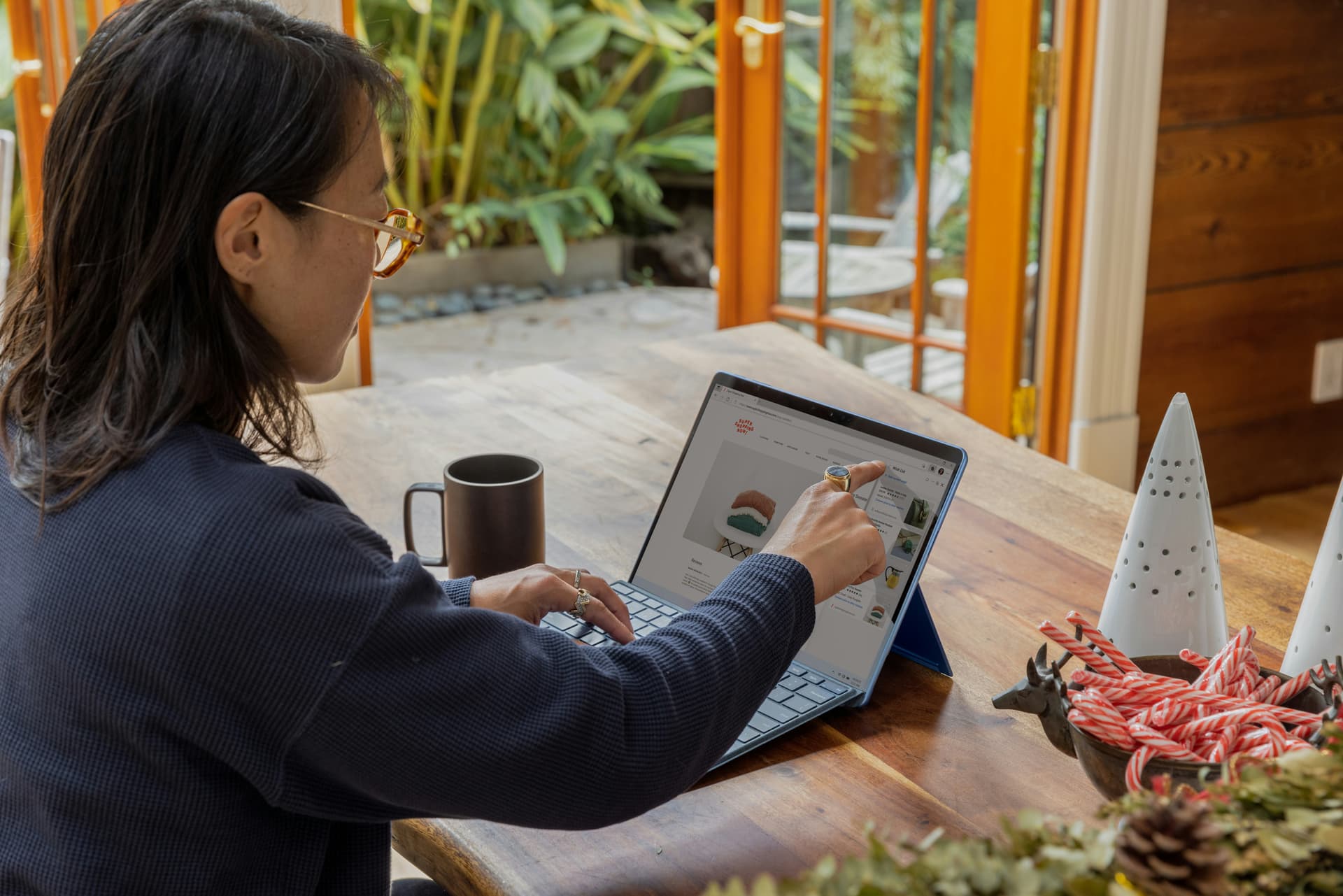Small Business SEO: Boost Your Online Presence Traffic

In today’s digital landscape, small businesses face fierce competition. Building a strong online presence is crucial for success, and SEO is a key part of that. SEO helps improve your website's visibility on search engines like Google, making it easier for customers to find you.
This guide is about small business SEO. It provides practical strategies to improve your online presence. It also helps increase traffic to your website.
Table of Contents
1. Introduction to SEO for Small Businesses
• What is SEO?
• Why SEO Matters for Small Businesses
2. Keyword Research: The Foundation of SEO
• Understanding Keywords
• Tools for Keyword Research
• How to Choose the Right Keywords
• Long-Tail Keywords vs. Short-Tail Keywords
3. On-Page SEO: Optimizing Your Website Content
• Crafting Effective Page Titles and Meta Descriptions
• Utilizing Headers and Subheaders
• Optimizing URL Structure
• Internal Linking Strategies
• Image Optimization
• Mobile Optimization
4. Off-Page SEO: Building Your Website’s Authority
• What is Off-Page SEO?
• The Importance of Backlinks
• Strategies for Acquiring Quality Backlinks
• Social Media and Its Impact on SEO
• Local SEO: Enhancing Your Local Presence
5. Technical SEO: Ensuring Your Website’s Health
• The Role of Technical SEO
• Improving Site Speed
• Mobile-Friendliness and Responsive Design
• XML Sitemaps and Robots.txt
• Fixing Broken Links
• Secure Sockets Layer (SSL) and HTTPS
6. Content Creation and Strategy
• Why Content is King
• Developing a Content Strategy
• Blogging Best Practices
• Creating Engaging Visual Content
• Content Distribution and Promotion
7. Local SEO: Dominating Your Local Market
• Setting Up Google My Business
• Local Citations and Directory Listings
• Encouraging and Managing Customer Reviews
• Local Content and Keywords
• Geo-Targeting and Local Landing Pages
8. Measuring and Analyzing Your SEO Efforts
• Tools for SEO Analytics
• Key Metrics to Monitor
• How to Use Google Analytics
• Making Data-Driven Decisions
• Adjusting Your SEO Strategy
9. Common SEO Mistakes to Avoid
• Keyword Stuffing
• Neglecting Mobile Optimization
• Ignoring Local SEO
• Overlooking Technical SEO Issues
• Focusing Solely on SEO and Ignoring User Experience
10. Conclusion
• The Importance of Continuous SEO Efforts
• Staying Updated with SEO Trends
• Final Thoughts and Best Practices
1. Introduction to SEO for Small Businesses

What is SEO?
SEO is improving your website so it appears higher in search engine results. The goal of SEO is to increase your website’s visibility, drive organic traffic, and ultimately, attract more customers. SEO includes keyword research, on-page and off-page optimization, technical changes, and creating content.
Why SEO Matters for Small Businesses
For small businesses, SEO is a powerful tool that can level the playing field with larger competitors. Improving your search engine rankings gets you noticed online. It attracts more customers and brings relevant visitors to your website. Effective SEO helps build credibility, enhances user experience, and contributes to your business’s long-term growth.
2. Keyword Research: The Foundation of SEO

Understanding Keywords
Keywords are the terms and phrases that people type into search engines when looking for information, products, or services. Identifying and targeting the right keywords is crucial for attracting the right audience to your website. Keywords can be categorized into several types:
• Short-Tail Keywords: These are broad and general keywords with high search volume but also high competition. For example, “shoes” is a short-tail keyword.
• Long-Tail Keywords: These are more specific phrases with lower search volume but also lower competition. They often have higher conversion rates. For instance, “best running shoes for flat feet” is a long-tail keyword.
Tools for Keyword Research
To find the best keywords for your business, utilize keyword research tools such as:
• Google Keyword Planner: This tool provides keyword ideas and search volume data.
• Ahrefs: Analyze keywords and competitor insights.
• SEMrush: Offers comprehensive keyword research and SEO tools.
How to Choose the Right Keywords
When selecting keywords, consider the following factors:
• Relevance: Ensure the keywords are relevant to your products or services.
• Search Volume: Higher search volume indicates more potential traffic but be mindful of competition.
• Competition: Balance between high competition and achievable rankings.
• Search Intent: Understand the user’s intent behind the search query. Are they looking to buy, learn, or compare?
Long-Tail Keywords vs. Short-Tail Keywords
Long-tail keywords often have lower competition and are more likely to attract highly targeted traffic. While short-tail keywords can drive a high volume of traffic, they may not always result in conversions. For small businesses, focusing on long-tail keywords can be a more effective strategy, especially in niche markets.
3. On-Page SEO: Optimizing Your Website Content
Crafting Effective Page Titles and Meta Descriptions
• Page Titles: The title tag appears in search engine results and browser tabs. It should include your primary keyword and be compelling to attract clicks. Aim for a length of 50-60 characters.
• Meta Descriptions: This brief summary appears below the title in search results. Write a clear, engaging meta description with relevant keywords, encouraging users to click. Keep it between 150-160 characters.
Utilizing Headers and Subheaders
Headers (H1, H2, H3, etc.) help structure your content and make it more readable. Use headers to break up text, include keywords, and guide readers through your content. Use the H1 tag for your main keyword as the main heading, and H2 and H3 tags for subheadings.
Optimizing URL Structure
• Short and Descriptive: Keep URLs short, descriptive, and easy to read. Include relevant keywords and avoid special characters or unnecessary parameters.
• Keyword Inclusion: Incorporate your primary keyword into the URL to enhance relevance and SEO.
Internal Linking Strategies
Internal links connect different pages within your website, helping users navigate and discover related content. Use descriptive anchor text for internal links and ensure that important pages are easily accessible. This practice also helps distribute link equity across your site and improves SEO.
Image Optimization
Images enhance user experience and engagement. Optimize images by:
• Using Descriptive Filenames: Name image files with relevant keywords.
• Adding Alt Text: Provide descriptive alt text for each image, including keywords where appropriate. Alt text helps search engines understand the content of the image.
• Compressing Images: Reduce file sizes to improve page load speed without sacrificing quality.
Mobile Optimization
With mobile devices accounting for a significant portion of web traffic, mobile optimization is crucial. Ensure your website is responsive, meaning it adjusts seamlessly to different screen sizes. Test your site on various devices to verify its performance and usability.
4. Off-Page SEO: Building Your Website’s Authority

What is Off-Page SEO?
Off-page SEO refers to actions taken outside your website to improve its authority and rankings. You need to get backlinks and engage on social media. Use other methods to show search engines that your site is valuable and trustworthy.
The Importance of Backlinks
Backlinks are links from other websites pointing to your site. They act as endorsements, signaling to search engines that your content is credible and relevant. High-quality backlinks from reputable sites can significantly boost your SEO.
Strategies for Acquiring Quality Backlinks
• Guest Blogging: Industry-related blogs and include a link back to your website.
• Influencer Collaborations: Partner with influencers or industry leaders to gain backlinks through their platforms.
• Content Promotion: Share your content on social media and industry forums to attract natural backlinks.
• Directory Listings: Submit your site to relevant online directories and business listings.
Social Media and Its Impact on SEO
Social media does not directly impact SEO rankings. However, being active on social media can attract more visitors to your site. This can also increase your brand's visibility. Share your content, engage with your audience, and build a strong online community to support your SEO efforts.
Local SEO: Enhancing Your Local Presence
Local SEO helps improve your online visibility to attract nearby customers. For small businesses, local SEO is particularly important as it helps you connect with customers nearby.
Your Google My Business listing is complete. Include accurate details such as your address, phone number, operating hours, and website link. This will help improve your visibility. Add high-quality photos and encourage customers to leave reviews.
Ensure you list your business in local directories like Yelp and Yellow Pages to increase visibility and credibility. Consistent information across these platforms helps improve local SEO.
• Encourage and Manage Customer Reviews: Positive reviews enhance your credibility and improve local search rankings. Respond to reviews promptly and professionally, addressing any concerns or issues raised by customers.
• Local Content and Keywords: Create content that appeals to your local audience by include location-specific keywords and topics. For example, if you own a coffee shop in Portland, you might write blog posts about local events or coffee culture in Portland.
Geo-Targeting and Local Landing Pages
Develop local landing pages for different locations you serve. These pages should include localized content, keywords, and relevant information to attract traffic from specific geographic areas.
5. Technical SEO: Ensuring Your Website’s Health
The Role of Technical SEO
Technical SEO involves optimizing the technical aspects of your website to improve its performance and search engine rankings. This includes ensuring your site is accessible, fast-loading, and free of errors.
Improving Site Speed
A fast-loading website enhances user experience and reduces bounce rates. To improve site speed:
• Optimize Images: Compress image files to reduce load times.
• Leverage Browser Caching: Store static files in users’ browsers to speed up repeat visits.
• Minimize HTTP Requests: Reduce the number of elements on each page to decrease load times.
• Use a Content Delivery Network (CDN): Improve load times for users in different locations.
Mobile-Friendliness and Responsive Design
Ensure your website is mobile-friendly by implementing responsive design. This allows your site to adapt to various screen sizes and devices, providing a seamless experience for mobile users. Test your site’s mobile performance using tools like Google’s Mobile-Friendly Test.
XML Sitemaps and Robots.txt
• XML Sitemaps: Create and submit an XML sitemap to search engines to help them crawl and index your site more effectively.
• Robots.txt: Use a robots.txt file to control which pages or sections of your site search engines can crawl and index.
Fixing Broken Links
Broken links negatively impact user experience and SEO. Regularly check for and fix broken links using tools like Screaming Frog or Google Search Console.
Secure Sockets Layer (SSL) and HTTPS
Ensure your site uses HTTPS to provide a secure connection for users. Search engines prioritize secure sites, and SSL certificates help protect sensitive information transmitted between your site and visitors.
6. Content Creation and Strategy
Why Content is King
High-quality content is crucial for engaging your audience and improving your SEO. It attracts visitors, encourages them to spend more time on your site, and can lead to higher conversion rates.
Developing a Content Strategy
Create a content strategy that aligns with your business goals and target audience. Consider the following elements:
• Content Types: Understand type of content that resonate with your audience, such as blog posts, videos, infographics, or podcasts.
• Content Calendar: Plan and schedule your content to ensure consistent publication and alignment with key dates or events.
• Content Goals: Define clear goals for your content, such as increasing website traffic, generating leads, or building brand awareness.
Blogging Best Practices
• Write for Your Audience: Create content that addresses your audience’s needs and interests. Provide valuable information and solutions to their problems.
• Optimize for SEO: Incorporate relevant keywords, use engaging headlines, and include internal and external links.
• Promote Your Blog Posts: Share your blog posts on multiple marketing channels to drive more traffic.
Creating Engaging Visual Content
Visual content enhances user experience and engagement. Use high-quality images, videos, and infographics to complement your text and convey information effectively. Optimize images and videos for fast loading and use descriptive alt text for better SEO.
Content Distribution and Promotion
Effective content distribution and promotion are essential for reaching a broader audience. Utilize various channels to amplify your content’s reach and impact.
7. Local SEO: Dominating Your Local Market
Setting Up Google My Business
Creating and optimizing your Google My Business (GMB) listing is a critical step in local SEO. Follow these steps:
• Claim and Verify Your Listing: Claim your business on Google My Business and complete the verification process.
• Provide Accurate Information: Your business name, address, phone number, and website URL is consistent across all platforms.
• Add Photos and Updates: Use high-quality photos of your business. Update your listing with relevant information, such as special offers or changes in hours.
Local Citations and Directory Listings
Local citations are online mentions of your business’s name, address, and phone number (NAP). Consistent and accurate citations across directories and local listings help improve your local search rankings. Submit your business to relevant directories and ensure your information is up-to-date.
Encouraging and Managing Customer Reviews
Customer reviews are a key factor in local SEO. Encourage satisfied customers to leave reviews on Google and other review platforms. Respond to reviews professionally and address any negative feedback constructively to maintain a positive reputation.
Local Content and Keywords
Create content that appeals to your local audience by include location-specific keywords and topics. For example, if you own a coffee shop in Portland, you might write blog posts about local events or coffee culture in Portland.
Geo-Targeting and Local Landing Pages
Develop local landing pages for different locations you serve. These pages should include localized content, keywords, and relevant information to attract traffic from specific geographic areas.
8. Measuring and Analyzing Your SEO Efforts
Tools for SEO Analytics
To track and analyze your SEO performance, use tools such as:
• Google Analytics: Provides insights into website traffic, user behavior, and conversions.
• Google Search Console: Offers data on search performance, indexing issues, and site errors.
• Ahrefs: Provides comprehensive SEO insights, including backlinks, keyword rankings, and site audits.
• SEMrush: Offers a range of SEO tools, including keyword research, site audits, and competitive analyzing.
Key Metrics to Monitor
Focus on the following metrics to assess your SEO performance:
• Organic Traffic: The number of visitors coming from search engines.
• Keyword Rankings: Your website’s position for target keywords in search results.
• Bounce Rate: The percentage of visitors who leave your site after viewing only one page.
• Conversion Rate is the percentage of visitors who do something you want, like buying something or filling out a form.
• Backlinks: The quantity and quality of external links pointing to your site.
How to Use Google Analytics
Google Analytics provides valuable insights into your website’s performance. Create goals to measure conversions, study where traffic comes from, and watch how users behave to see how they use your site. Use this data to make informed decisions and improve your SEO strategy.
Making Data-Driven Decisions
Use the data from your SEO analytics tools to make informed decisions about your strategy. Identify what’s working well and what needs improvement. Adjust your tactics based on performance metrics to optimize your SEO efforts and achieve better results.
Adjusting Your SEO Strategy
SEO is an ongoing process. Regularly review your performance, stay updated with industry trends, and adjust your strategy as needed. Try new strategies, test various methods, and keep improving your SEO to stay competitive and reach your goals.
9. Common SEO Mistakes to Avoid
Keyword Stuffing
Keyword stuffing involves overusing keywords in your content to manipulate search rankings. This practice can negatively impact readability and user experience, leading to penalties from search engines. Instead, focus on creating high-quality, valuable content that naturally incorporates keywords.
Neglecting Mobile Optimization
With the increasing use of mobile devices, mobile optimization is crucial. A website that isn’t mobile-friendly can lead to a poor user experience and lower search rankings. Ensure your site is responsive and performs well on all devices.
Ignoring Local SEO
For small businesses with a local focus, neglecting local SEO can limit your visibility and growth. Optimize your Google My Business listing, create localized content, and build local citations to enhance your local search presence.
Overlooking Technical SEO Issues
Technical SEO issues can harm your search rankings. These problems include slow loading times, broken links, and missing sitemaps. They can also make the user experience worse. Regularly audit your site for technical issues and address them promptly.
Focusing Solely on SEO and Ignoring User Experience
While SEO is important, user experience should not be overlooked. Ensure your website is easy to navigate, visually appealing, and provides valuable content to keep visitors engaged and satisfied.
10. Conclusion
The Importance of Continuous SEO Efforts
SEO is not a one-time task but an ongoing process. Regularly check and improve your website to stay ahead of competitors and adjust to changes in search engine rules. Update your content often, improve your strategy, and stay informed about trends to boost your search rankings.
Staying Updated with SEO Trends
The SEO landscape is constantly evolving, with new trends and updates emerging regularly. Keep up with the latest SEO trends by reading industry blogs, joining webinars, and connecting with SEO communities.
Final Thoughts and Best Practices
Effective SEO needs a mix of keyword research, website optimization, technical fixes, and good content. By using these techniques and steering clear of common errors, you can improve your online presence, drive more traffic, and reach your business goals.
SEO is a sustained effort, not a short-term project. Stay committed to your efforts, be patient, and continue to strive for improvement to see long-term success.
This guide covers small business SEO, offering practical tips to improve your online presence and attract more visitors. Feel free to tailor this guide to your specific needs and industry for even better results!
www.e9.digital - [email protected]
Shopify Development Service, E-commerce Solutions, Online Store Optimization | E9 Digital Agency
192 Tran Quang Khai, District 1
Ho Chi Minh city, Vietnam
More Topics

How To Run a SEO Audit for Your Ecommerce Store
Boost Your Ecommerce Success: Mastering SEO Audits for Increased Visibility & Sales

Top Shopify Themes 2024
Explore the five best Shopify themes, including the versatile Dawn, to enhance your online store's appearance and functionality for an optimal shopping experience.

Exploring the New Features and Updates in React 19
React 19 is here, and it brings a host of improvements and new features that enhance the developer experience and optimize user interfaces. This latest version focuses on making the library more efficient, easier to debug, and more pleasant to use. Let's dive into the major updates and features introduced in React 19.
Let start your
project together
Tell us your idea and we will make it happen together.
